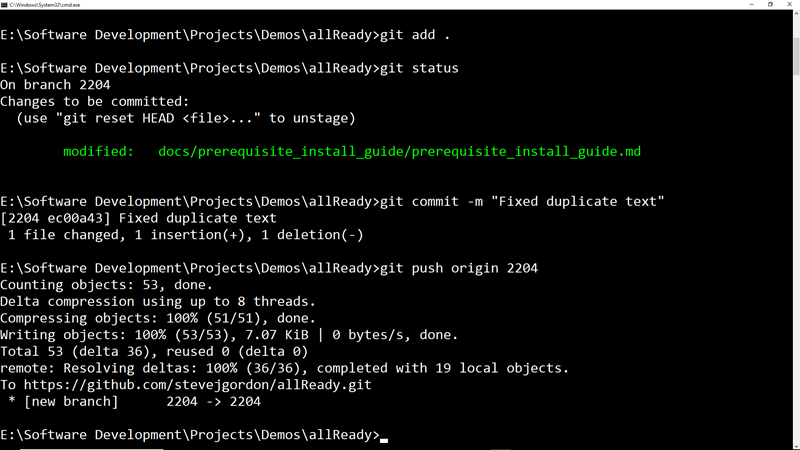

That’s why when you run git status, you see this message: origin/main, however, still points to the first commit. As you can see, main now points to the last commit. However, after adding two more commits, the repo looks like the image above. It exists solely to track the progress of the remote branch on the original remote repository. This is what we call a remote tracking branch. So, this is what the local repo looks like on your machine:Īs you can see, besides the regular main branch, we also have origin/branch.
#Git add remote and push code
We’ll walk you through our first example, but this time with diagrams rather than code samples.įirst, consider the state of your GitHub repository after creating it online:Īs you’ll remember, we started out by cloning the GitHub repo.

We’ll now give you a step-by-step visual guide of the git push command. A Picture Is Worth a Thousand Words: A Visual Explanation of git push How do these three types of branches interact with each other? What role do they play when you push and pull code around? Let’s answer that next.

You can’t write to them, but Git updates them whenever you do some network communication-e.g., when you fetch from the remote. Remote-tracking branches are sort of “read-only” branches you have locally that track the status of a remote branch. Remote branches are branches that live in a remote. They’re yours, and you can do anything you want with them. Local branches are the ones you have in your local repository. Generally speaking, there are three types of branches in Git: local branches, remote branches and remote-tracking branches. The last piece of the puzzle to understand collaboration in Git are branches. That’s exactly what you did in the previous example. If you have write privileges to a remote, you can push your commits to it. Well, you can actually have remotes on your own machine, but it’s not typical. Remotes, in a nutshell, are repositories on other machines. In Git, you don’t have a central server, so how can you collaborate with others? You don’t have a central server, but you can have one or more remote repositories, or simply remotes. When it’s time to collaborate with others, you push your commits-that is, you send them over the network. Each commit object is identified by a hash, which is calculated from the information on the commit and is virtually guaranteed to be unique. In Git, committing is a local operation, which simply means “saving” changes to your local database. So, unlike Subversion and others, it doesn’t have a central server, which means there’s no central authority who can assign revision numbers to commit. Git is a decentralized version control system. This will require you to learn more about the fundamentals of network operations on Git. Now let’s go deeper into the git push command. Git Network Fundamentals: Commits, Remotes and More Get back to GitHub on your browser, press F5 and you’ll see the changes in the README file as well as the new commits now being displayed. The message makes it clear: to send your changes to the remote, run git push. If you now run git status, you should see the following result: Now, it’s time to clone the repository locally. You now have a repo on GitHub with a single commit. Just click on Create repository and you’re done. Make sure to check the option to create a README file. The name of the repo doesn’t matter, nor does the privacy configuration. If you’re not already logged into your GitHub account, the link will take you to the login page. Start by creating a new repository on GitHub. Let’s start with a minimum, practical example of git push. How Do I Push to a Remote Branch? A Minimal Example It helps you push your changes up to a remote repo. The command you’ll use in all of those scenarios is git push. Even if you’re working alone, you probably have some remote on GitHubor somewhere similar and need to get your code there, too. If you’re working with other people, you need to get your changes to them somehow. This post assumes you’re comfortable with the command line and familiar with at least the most basic Git commands. The latter is the topic of today’s tutorial. As for the former, you can check out the tutorial we already created. The main commands for that are git pull and git push. Though most operations in Git are offline, collaborating requires syncing to at least one remote repository.


 0 kommentar(er)
0 kommentar(er)
